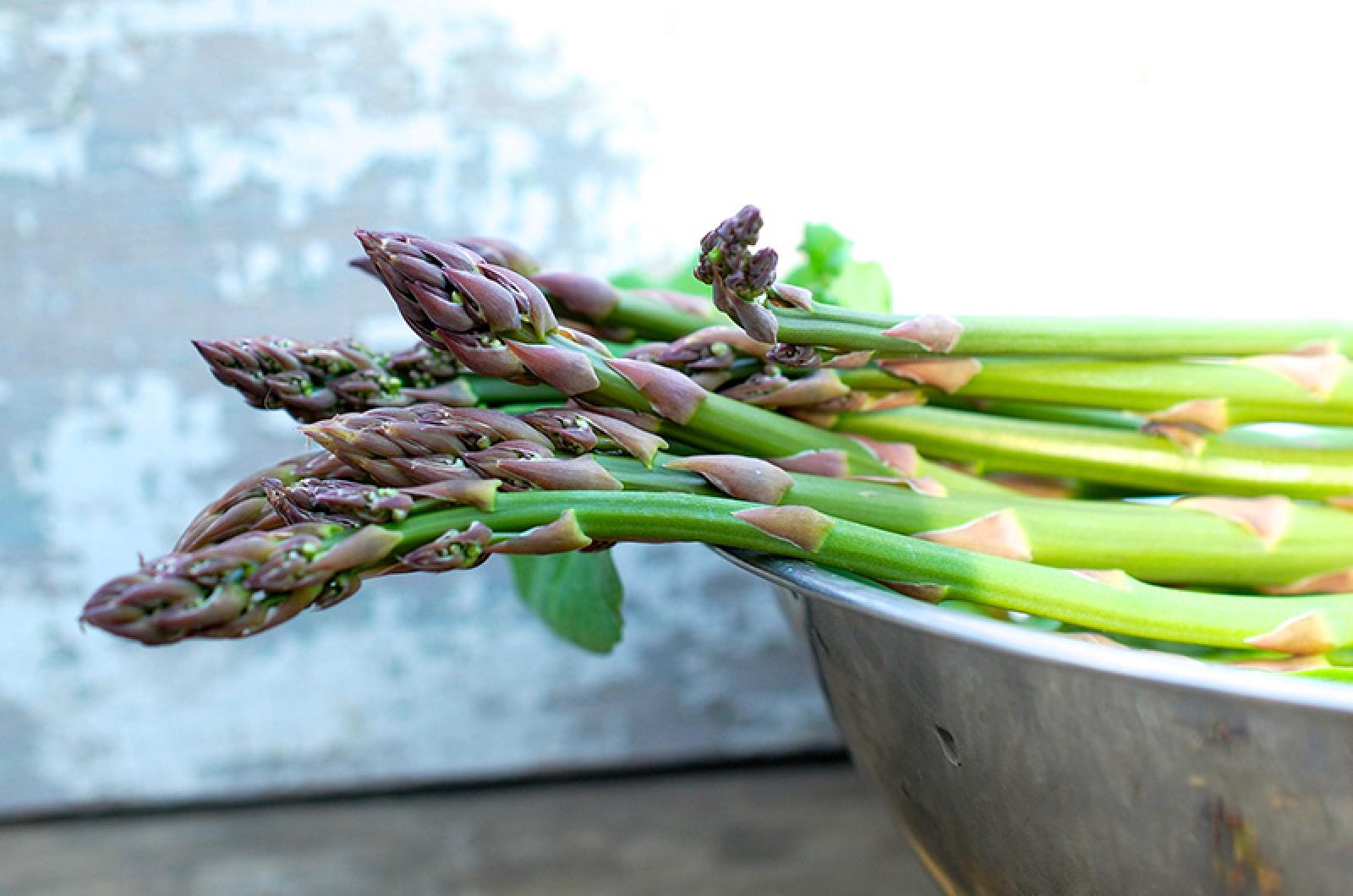I always jump the gun — never been good at sitting still for long. (I was nearly kicked off my first television appearance on Romper Room at the age of four for repeatedly leaving my seat.) So coronavirus desk-squatting is getting on my nerves. Thank goodness I can now get up twelve times a day to see if my seeds have germinated or my seedlings have grown a millimeter.
So when I saw dandelions appear in our yard last week, I though, eureka, it’s asparagus time! (The soil temperature for emerging asparagus and blooming dandelions is about the same, around 50 degrees.) On Facebook, my suspicions were confirmed: my Vineyard Haven friends had asparagus tips poking through the soil. Alas, up here in the hinterlands, dandelions or not, my asparagus people were still waiting.
Never mind, I thought. In my nervous excitement, I’d already decided I wanted to write about asparagus this week. So what if it’s not quite time.
But I have a small problem: I don’t actually have an asparagus bed. Because of my erstwhile peripatetic nature, I have started and abandoned two asparagus beds on this Island. That does not make me happy. Though just for the record, I am planning to stay in my current location until the cows come home (an expression as old as Romper Room). So we are scouring the yard, looking for a sunny spot to put the bed.
I’m also sorry to report that digging an asparagus bed and planting the crowns is an all-day project. Maybe even an all-weekend one unless you have some properly social-distanced help (like your spouse, who at this point may want a little distance from you anyway!). Two people can certainly dig the foot-deep trenches in a couple mornings, depending on how loose your soil is and how big your bed is going to be.
In my last spot, I decided on two 30-foot rows, and put a path in between them for easier harvesting. I was actually able to put these rows at the far end of a deer-fenced garden in an area I wouldn’t be rotating or digging up every year. (Once you plant asparagus crowns, you will be harvesting from the same spot for years to come.) But asparagus is not at the top of the delicious list for deer so you don’t have to locate your bed inside a vegetable garden — and rows don’t have to be thirty feet long. Just know that your asparagus “bed” will actually be an asparagus “hedge” that throws shade for most of the summer season, since whatever asparagus is not harvested produces fern-like fronds that grow quite tall.
Once you’ve found a perfect spot for your asparagus, get rid of all ground cover, weeds, rocks, and anything that will compete with it. Make sure you have a good supply of compost and a good organic plant fertilizer before you start digging. If it is not too cumbersome (a tarp can be helpful), combine the dirt you remove from the trench with a good amount of compost. If that’s not possible, just be sure to surround the crowns with a few shovelfuls of compost when planting.
But wait, you also need something to plant! You can still mail-order asparagus crowns (these look a bit like octopuses) from online sources (though some sources are already sold out of stock), but I have gotten them at SBS and Island nurseries in the past, so call around. Soak them in water before you plant them and position them on mounds of compost about 18 inches apart along your trench. There are plenty of online videos you can watch before starting.
Planting this spring will give your asparagus a good start. Then next year when the tips appear, you can be momentarily overjoyed — and then crushed. You can’t harvest any spears the first year (the plant needs the energy from the growth), but take heart: you can harvest lightly for the first two weeks the following spring. Harvest for a few more weeks the next year, and then you’ll have plenty in year four for about six to eight weeks. You can see why I cry over abandoned asparagus beds.
Or skip all that and just hang around Morning Glory Farm waiting patiently for the first harvest of those big delicious spears that come from very mature beds. In the old days, they used to sell the asparagus out of the greenhouse before they opened in May. But this year Morning Glory plans to open the stand on May 1, which could pre-date the asparagus harvest. The good news is that the harvest usually lasts until June.
Once you get some of those fresh thick spears, please try one of my favorite methods for cooking them: brown-braising. First you sauté the trimmed spears in a little butter to brown them. Then you add just a bit of liquid to the pan (broth and wine or lemon juice), cover, reduce the liquid — and the spears are perfectly cooked. Add a little Dijon mustard, some fresh thyme, and a bit more butter to the pan, and swirl it around for a little pan sauce to nap the asparagus. So good you will eat them right out of the pan. Get the recipe for Quick-Braised Asparagus with Dijon-Herb Pan Sauce on cookthevineyard.com.
When you wind up with spears that are all different thicknesses, try my next favorite technique: Slicing the asparagus on the bias into pretty pieces about a quarter inch thick. They will then cook evenly and perfectly in a sauté or stir-fry. Grab the recipe for Sauteed Asparagus with Prosciutto Crisps on cookthevineyard.com too.
So that wasn’t so bad, was it, getting all geared up about asparagus before we actually have it? Well, maybe don’t answer that.







Comments
Comment policy »